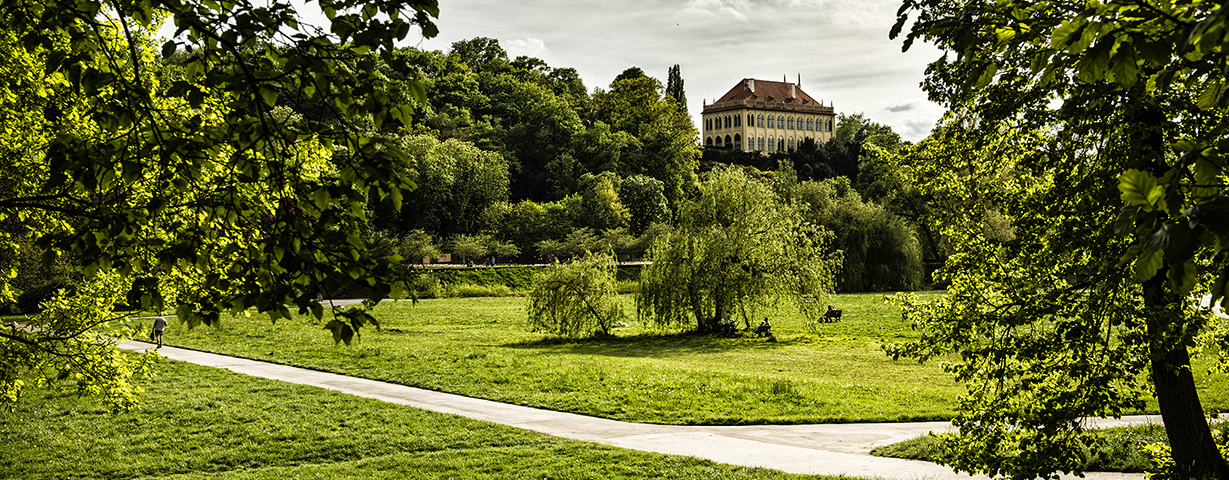Green Prague

Prague is known in part for its natural beauty. Despite the urban bustle and rapid development, the city is home to many green oases that offer an escape from fast-paced daily life and an opportunity to connect with nature. In fact, undeveloped land makes up nearly half of the capital's area, which puts Prague at the very top in terms of green space compared to other world-class cities.
Enjoy walks through gardens and parks and explore the natural side of fascinating Prague.
OUR TIPS
Stromovka: a green paradise in the middle of the big city
The largest of its kind in Prague is Stromovka, which was founded on the Vltava's left bank in the 13th century by Přemysl Otakar II as a game park for hunting. Since then, Stromovka has undergone an elaborate evolution, from its greatest heyday in the 16th century, through several instances of being looted and destroyed by troops, to its subsequent restoration.
Today it numbers among the city's finest jewels. Covering some 90 hectares, its combination of grassy areas, stands of trees, and paved surfaces not only offers great options for relaxation, but also encourages sports activities, picnics and exploration. Stromovka is also unique for its collection of trees – here you will find over 200 species and cultivars of deciduous trees and over 40 species and cultivars of conifers.
Letná Park: a unique carousel and a panoramic view of Prague
A magical view of the Vltava and the city is provided by Letná Park, which was built in the last quarter of the 19th century at the edge of the Letná hillside. The local slopes are part of the City of Prague's territorial system for ecological stability, and bio-centres and bio-corridors have been delineated here, serving to ensure the free migration of living organisms.
The park is also interesting due to the oldest preserved platform carousel in Europe, made in the year 1892. This unique historic monument includes 19 horses of various sizes and 4 little cars modelled on those from 1930s. The carousel is owned by the National Technical Museum, which had this historical rarity repaired, so it could start spinning again in the summer months starting in mid-2022.
Prague Castle Gardens: natural beauty in the shadow of history
The complex of palace gardens at Prague Castle also offers an escape into calm and greenery and can pride itself on numerous terraces, stairways, gazebos and original sculptures. The most historically valuable is the Royal Garden, its greatest gem being one of the most beautiful fountains in Europe – the Singing Fountain.
These gardens with both Renaissance and Baroque elements will also enchant you with century-old trees imported from abroad, as well as a unique view of the city and its labyrinth of red Malá Strana roofs. Another jewel is the Garden on the Bastion, which is built in the style of Italian and Japanese gardens.
Wallenstein Garden: an enchanting symbiosis of nature and art
One of the most significant works of the Czech early Baroque is no doubt the Wallenstein Garden. It is found below the Castle in Malá Strana, in the complex of the Wallenstein Palace. It is divided up into several sections and can boast meticulously maintained lush greenery, hedges, sculptures of figures from Greek mythology, an aviary with exotic birds, peacocks, and a pond with a marble statue of Hercules rising out of the middle.
Perhaps the most interesting part of the garden is the artificial grotto complete with stalactites, while an architectural treasure is the Sala Terrena, an impressive structure decorated with frescoes depicting scenes from the Trojan War. Various classical music concerts and theatre performances also take place here during the summer season.
Prokop Valley: a nature reserve full of wild beauty
Calm, tranquillity and beautiful wilderness also reign in Prokopské & Dalejské údolí, a nature reserve that is rightly considered a natural jewel of Prague. Its territory of about 205 hectares is formed by deep-cut valleys, the shapes of which were carved out over millennia by the streams Dalejský potok and Prokopský potok. In places, the canyon in the central part of the valley reaches a depth of as much as 70 metres.
A walk through Prokop Valley offers visitors a glimpse of the geological evolution of rocks from the Upper Ordovician to the Middle Devonian. This nature reserve also includes steep limestone cliffs, abandoned quarries and dark caves that harbour the remains of prehistoric animal and human life.
The most romantic and most visited place in Prokop Valley, however, is the 106 m long, 26 m wide and 10 m deep lake that stretches out beneath a steep limestone cliff.
